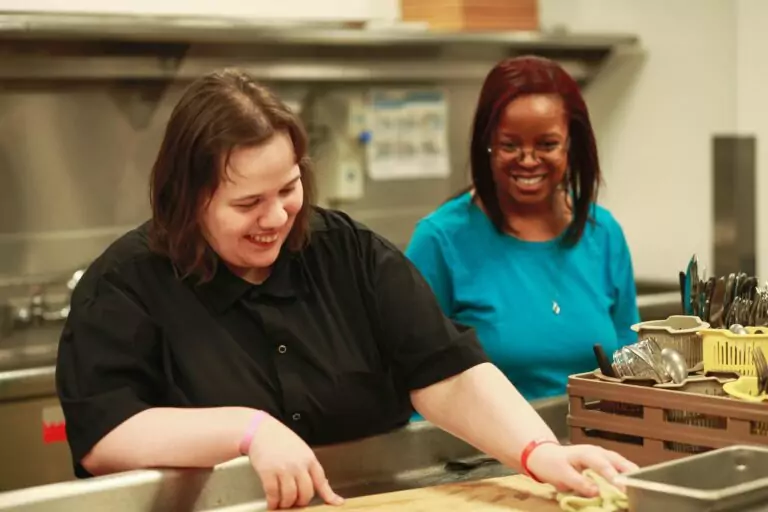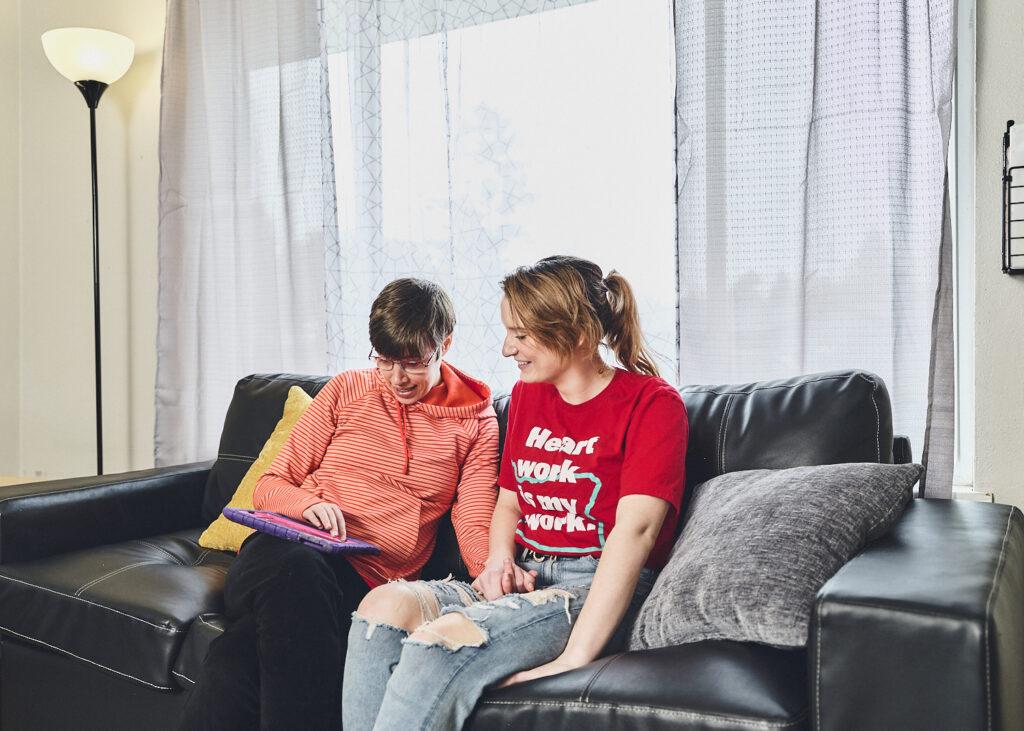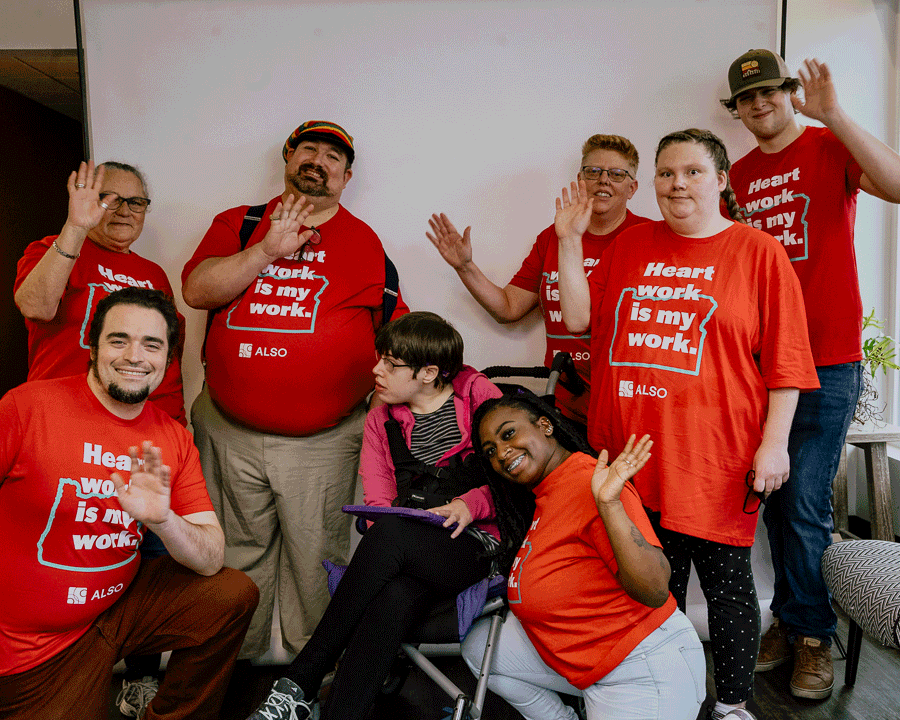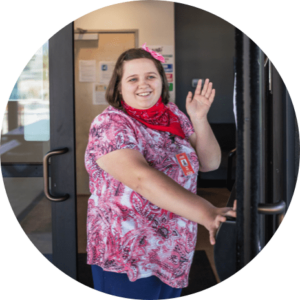Read more about the services ALSO offers to people with intellectual and developmental disabilities.
Read more about the services ALSO offers to people with intellectual and developmental disabilities.

The women’s rights movement has been responsible for many sweeping changes and better equality for women and girls. A main assertion of the feminist movement is that women’s rights also mean total gender equality – benefiting those who identify as men, women, and non-binary. It’s undeniable that these brave women with a never-never-give-up attitude were responsible for achievements in voting rights, reproductive rights, accountability in gender-based violence, and equal rights in employment, housing, and education.
One aspect of equal rights for women that can stand improvement is in disability rights. This is especially important because 1 in 5 women globally have a disability. Their presence, value, and needs have been largely minimized (and many say ignored) by mainstream feminist movements.
ALSO is an Oregon nonprofit service provider for people with intellectual and developmental disabilities. In this blog, we unpack the concept of ableism in the women’s movement. As we explain how it has fallen short for women with disabilities, we also describe how we can work together to build successful strategies that facilitate full community inclusion and equal opportunity for all people with disabilities.
The advocacy organization, Stop Ableism, offers the following definition of ableism:
“…practices and dominant attitudes in society that devalue and limit the potential of persons with disabilities. A set of practices and beliefs that assign inferior value (worth) to people who have developmental, emotional, physical or psychiatric disabilities.”
Ableism can be both intentional and non-intentional. Those without disabilities may find it difficult to truly understand how the world is essentially “wired” and built for individuals without disabilities. Here are a few examples of ableist behaviors and systems:
LEARN MORE: 5 Common Misconceptions About People with Disabilities
Virginia Ossana, an activist in women’s rights and disability movements, helps us to understand how ableism can creep into almost any form of activism. Virginia has a physical disability that necessitates the use of crutches.
She was proudly marching at a women’s protest in Argentina when she asked someone in front of her to make room for her so that she could maintain her balance. Unfortunately, this person angrily asked her why she was there if she knew it was going to be difficult for her.
After the initial shock of this statement, she took a closer look at the situation. She noted several forms of discrimination. For example,
Ossana determined that these biases amounted to disability discrimination. She determined that not only do systems and better practices need to be put in place, but an attitudinal shift needed to occur that acknowledges full inclusion of women with disabilities.
Because ableism encourages a negative view of disability, it can result in negative impacts on anyone living with a disability. Ableism can also indirectly affect family members and other caregivers. A major issue is barriers to high-quality healthcare due to a bias (implicit or explicit) that those with disabilities have less value than those without disabilities – or attributing all illness to the disability, about which nothing can be done. Other examples include:
Ableism also affects the person with a disability internally – convincing them that they have no skills, rights, or ability to contribute to society.
LEARN MORE: The Positive Impact of People with Disabilities on Communities

Besides the fact that about 1 in 5 women are living with a disability, there are several other reasons that these women should have greater gender equality and inclusivity in the women’s movement. Reproductive rights are extremely important for this often-marginalized minority, which is 3 times more likely to face sexual violence due to:
As we all know, there is strength in diversity! If feminism and women’s rights are to succeed and benefit those of all races, sexual orientations, gender identities, and ethnicities, it simply can’t afford to exclude women with disabilities.
LEARN MORE: 6 Famous People with Disabilities (and what they did for all of us)
So, how can we succeed in bridging the gap between the feminist and the disability rights movements? An initial step for disability rights advocates and feminist activists is to understand and embrace the concept of intersectionality.
The term intersectionality first emerged in Black feminist literature. While researching civil rights, social justice, and discrimination against people of color, Kimberle Williams Crenshaw found that scholarly works ignored the additional and compounded oppression experienced by Black women. In later years, intersectionality started to include the overlapping of various identities, such as sexual orientation, gender, religion, and national origin.
LEARN MORE: Intersections Between Racism and Ableism
Even though disability has the largest population globally as well as including all races, sexual identities, ages, ethnicities, etc., it is only recently that an intersectional approach has started to be applied to women with disabilities. This will likely facilitate an attitudinal and systemic shift that allows women with disabilities to openly expect:
The result should be a dramatic decrease in ableism and an expansion of intersectional feminism that fully includes women with disabilities.

So, what can we do? How can our leaders in feminist movements and events effectively address ableism and promote full inclusion of people with all disabilities? First, we ask you to think humbly, reminding yourself of the likelihood that everyone will experience some kind of disability through disease, chronic illness, accidents, or simply the natural effects of aging. We’re all getting older!
Check out these additional recommendations that you can initiate on your own. Better yet, discuss these practices with your friends and colleagues.
It’s surprisingly easy for even the most well-informed of us to fall into the trap of using ableist language. The World Institute on Disability reminds us that the words we use in conversation and in writing can unintentionally perpetuate negative stereotypes and stigma towards people with disabilities. Even phrases like, ‘you’re such an inspiration!’ are patronizing and stigmatizing. Watch out for other types of ableist phrasing (also known as non-inclusive language) such as:
Isn’t it comforting to know that, even with just a few changes in the words we use, we can make a difference? Knowledge is truly power.

At ALSO, we are Advocates of Life Skills and Opportunity. For over 25 years, we have successfully assisted the individuals we support with developmental and intellectual disabilities in achieving independent living, competitive employment, and full inclusion into their communities. Through our person-centered support services, we have seen how people with disabilities can succeed, achieve their goals, and contribute to their families, neighbors, and communities.
Learn more about our support services
ADDITIONAL SOURCE: ALSO Website

Sign up for our newsletter to get our latest news, content, and job opportunities.
Help us ensure that everyone has the same opportunities in their home, workplace and community. Let’s make dreams!
